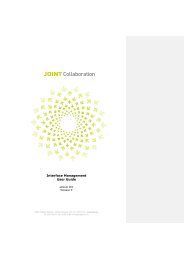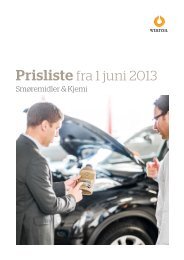Ida Ekblad MarIus Engh anawana haloba lars lauMann - Statoil
Ida Ekblad MarIus Engh anawana haloba lars lauMann - Statoil
Ida Ekblad MarIus Engh anawana haloba lars lauMann - Statoil
Create successful ePaper yourself
Turn your PDF publications into a flip-book with our unique Google optimized e-Paper software.
The Smiths’ album The Queen is Dead, 1986 display a clairvoyant<br />
knowledge of the future death of Princess Diana in 1997.<br />
Those of us who grew up with Morrissey as an icon in the<br />
1980s would be quite happy to believe that he had such powers.<br />
Part of Morrissey’s iconic status was the fact that he was so<br />
literate and culturally aware. He made reading sexy, quoting<br />
from Oscar Wilde, Proust, the Brontës, Hardy, Kerouac and<br />
of course his beloved Shelagh Delaney, author of A Taste of<br />
Honey. He also proved himself to be an astute and insightful<br />
semiotician of British culture in a decade when cultural studies<br />
and semiotics reached fever pitch. Roland Barthes, Jacques<br />
Derrida, Umberto Eco, Stephen Heath, Deleuze and Guattari<br />
were the cultural theorists you simply had to familiarise yourself<br />
with if you were studying literature or philosophy or even if you<br />
were merely playing “spot the signifier” whilst out and about. For<br />
Laumann to make a film about Morrissey as a cultural shaman of<br />
sorts just seems to make perfect sense.<br />
Laumann’s baroque unfolding of his Diana conspiracy would<br />
seem to follow the rhizomatic principle of Deleuze and Guattari,<br />
presenting us with a type of cultural cartography which is<br />
“acentric, non-hierarchical and a-signifying.” It is as if Laumann has<br />
structured the film to introduce conspiracies within the conspiracy<br />
– a perfect aesthetic conceit. The work becomes an investigation<br />
of the form he chooses to use. Starting with Alain Delon from<br />
L’Eclisse, he weaves a path through The L-Shaped Room (with<br />
its subtext of lesbianism), Darling, A Taste of Honey, The Man<br />
who came to Dinner, The Killing of Sister George and Hobson’s<br />
Choice – creating a vortex of cinematic signification.<br />
There are larger issues emerging here: the computerisation<br />
of the public and private sphere has led to a digital society<br />
where traditional knowledge systems of inference and induction<br />
have broken down, hence the propensity for wildfire conspiracy<br />
theories. There is a sense that no one can trust where<br />
information is coming from; yet at the same time, all information<br />
– no matter how irrational or crazy it seems – is of equal value.<br />
We also find a new preoccupation with coincidence in<br />
contemporary culture. It seems like some kind of therapeutic<br />
strategy for dealing with increasing alienation, a way of coping<br />
with the density of new social networks. This is no doubt related<br />
to the death of religion and to what philosopher Paul Virilio calls<br />
the fantasy of simultaneity imposed on us by globalisation.<br />
The acceleration taking place in our present culture also<br />
leads to an intensification in the rate of accumulation of<br />
information. With so much becoming obsolete so quickly, we<br />
have become obsessed with cataloguing and archiving the “past”<br />
in new ways as time slips more rapidly through our fingers.<br />
In Outside the Archive: The World in Fragments<br />
Lucy Reynolds has written:<br />
Experimental filmmakers’ tactics of subversive intervention<br />
constitute an assault on cinema’s homogenous surfaces …<br />
as outsider archivists they break into the layers of history locked<br />
into the film image in an attempt to assimilate their own position<br />
as artist filmmaker to that of film’s wider circles of history. 2<br />
Laumann certainly utilises this strategy.<br />
In Berlinmuren (The Berlin Wall) Laumann presents us with<br />
a portrait of a woman who describes herself as an “objectum<br />
sexual”, a woman who falls in love with and marries the Berlin<br />
Wall. Superficially, this would seem to be a portrait of an<br />
idiosyncratic and transgressive human being, but as with all<br />
of Laumann’s work there is far more here than the banality of<br />
psychological interpretations which,<br />
137

















